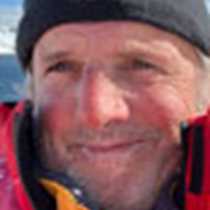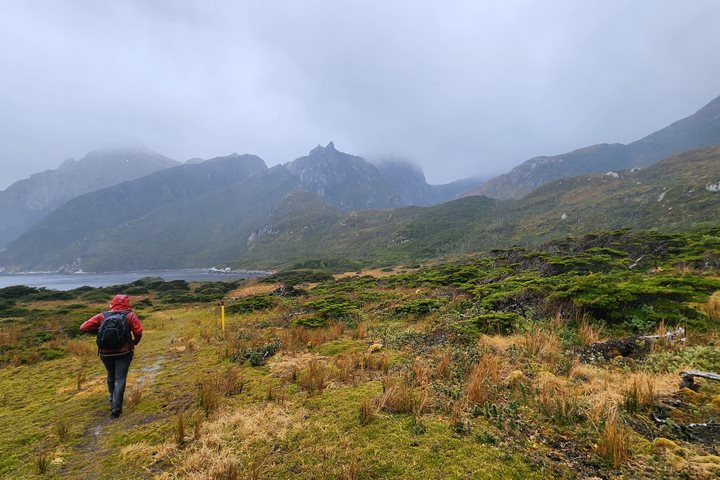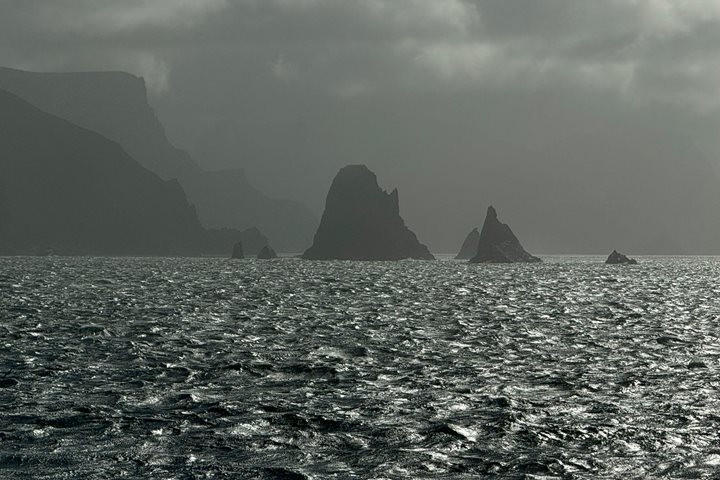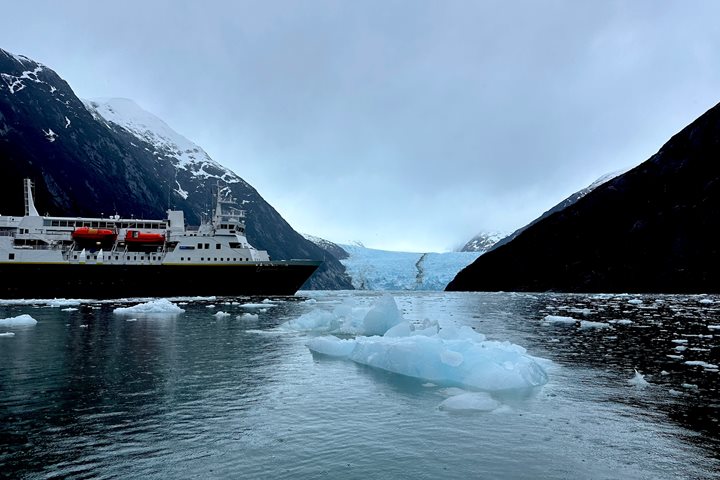Our morning was spent at Bahia Fortescu. There is a cross here to signify the first Catholic Mass in the region. This first mass in Chilean territory was celebrated by Fray Pedro de Valderrama on November 11, 1520. This is considered a milestone that denotes the beginning of evangelization in the country and, thus, the presence of the Catholic Church in Chile. The work was commissioned in its design by the Department of Works, and the construction by the Third Naval Zone of the Chilean Navy, with the financing of private companies and Catholic parishioners in the region.
An easy landing allowed guests to access the cross and enjoy a walk along the beach - the beach that would have greeted the crews of the Magellan voyage seeking a navigable passage to the great marine expanse that is now known as the Pacific Ocean. Currently, Fortescue Bay is included in the Francisco Coloane Marine. It is a preferred location for humpback whales and supports an abundance of other wildlife including the natural habitat for a variety of marine mammals, such as sei whales, minke whales, orcas, sea lions, elephant seals, among others.
In the afternoon, a planned kayaking trip in a bay off the Magellan Strait was not possible due to strong winds. Instead, we enjoyed Zodiac cruising viewing Andean condors, Magellanic oyster catchers, imperial shags, kelp gulls and an occasional Magellanic penguin. After the cruising, National Geographic Resolution began its navigation towards Garibaldi Glacier where we look forward to offering kayaking and Zodiac cruises in spectacular landscapes.







